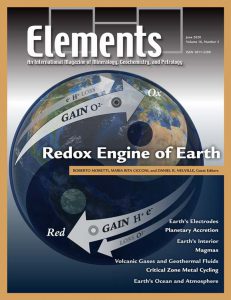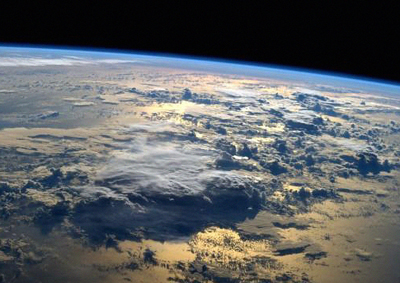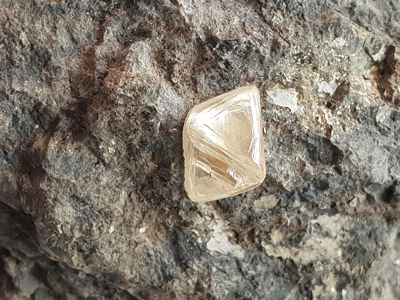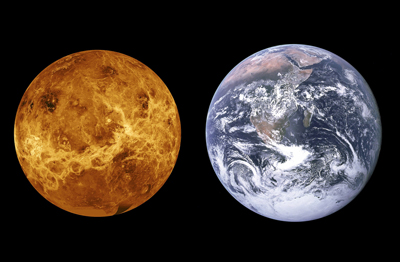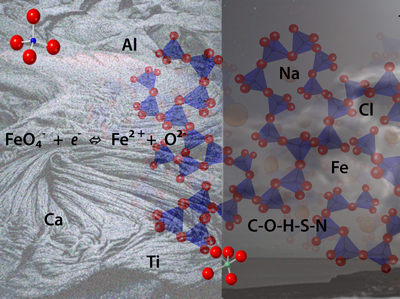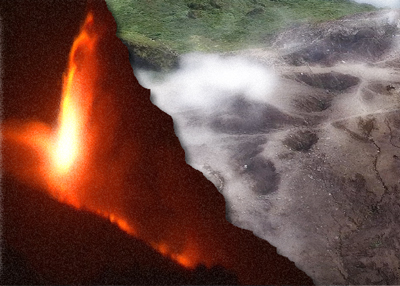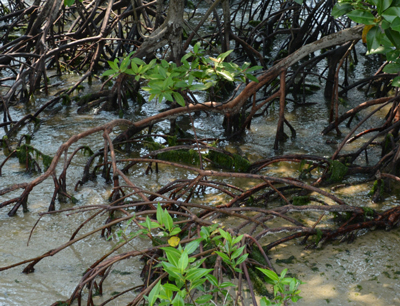Redox Engine of Earth
Roberto Moretti, Maria Rita Cicconi, and Daniel R. Neuville – Guest Editors
Table of Contents
The redox state is one of the master variables that drove the formation of the Earth and that now also controls life processes. From the dawn of geochemistry, a knowledge of redox states has been essential to understanding the compositional makeup of our planet and the fundamental processes that occur in any natural chemical system, from the core to the atmosphere, from magmatic systems to aquatic systems. The social and economic impact of redox geochemistry is enormous because of the control it plays on metal mobility, solubility, metal availability and any associated complexing ligands, and the widespread use of redox indicators for environmental hazard assessment. This issue of Elements will illustrate how understanding redox processes can help us to understand much of Earth’s activity.
- Earth’s Electrodes
- Redox Processes in Early Earth Accretion and in Terrestrial Bodies
- The Redox Boundaries of Earth’s Interior
- Magmas are the Largest Repository and Carrier of Earth’s Redox Processes
- Volcanic and Geothermal Redox Engines
- Electron Transfer Drives Metal Cycling in the Critical Zone
- Biogeochemical Controls on the Redox Evolution of Earth’s Oceans and Atmosphere
12th International Kimberlite Conference
Bruker
CAMECA
Crystal Maker
Excalibur Mineral Corporation
Dr. Henry A. Hanni
ProtoXRD
Scott-Smith Petrology Inc
Savillex
v16n4 Lithium: Less is More
GUEST EDITORS: Robert J. Bowell (SRK Consulting Ltd., UK), Philip A.E. Pogge von Strandmann (University College London and Birkbeck, University of London, UK) and Edward S. Grew (University of Maine, USA)
Together with hydrogen and helium, tiny amounts of lithium were created during the Big Bang at about 13.8 Ga. But the lithium nucleus is fragile and easily destroyed in stars, and it seems lucky that we still have any lithium left. Lithium is concentrated in Earth’s upper continental crust and is an essential constituent of 122 mineral species, the greatest mineralogical diversity being found in pegmatites of both the granitic Li–Cs–Ta type and peralkaline type. Lithium occurs naturally in two isotopes, 6Li and 7Li, which are readily fractionated, thus becoming sensitive to geological and environmental processes. This lightest of the solid elements provides the most punch per unit weight, whence “less is more.” Closed-basin brines (58%) and pegmatites plus related granites (26%) constitute the main sources of exploitable lithium worldwide. Rechargeable batteries that take advantage of lithium’s light weight and high electrochemical potential offer the greatest potential benefit to the most people: the development of lithium batteries was recognized by the 2019 Nobel Prize in chemistry. Lithium compounds are also used to control bipolar disorder. In a word, life as we know it at the start of the 21st century would not be possible without lithium.
- The Minerals of Lithium, a Quintessential Crustal Element Edward S. Grew (University of Maine, USA)
- The Cosmic Lithium Story Katharina Lodders (Washington University in Saint Louis, USA)
- Is it Time for Lithium Isotopes? Horst R. Marschall (Goethe Universität Frankfurt am Main, Germany) and Ming Tang (Rice University, USA)
- Lithium and Lithium Isotopes in Earth’s Surface Cycles Philip A.E. Pogge von Strandmann (University College London and Birkbeck, University of London, UK), Simone A. Kasemann (University of Bremen, Germany) and Josh Wimpenny (Lawrence Livermore National Laboratory)
- Natural Lithium Resources: Where Do We Find Lithium at Economic Potential? Robert J. Bowell (SRK Consulting Ltd., UK), Julien Declercq (SRK Consulting Ltd., UK), and Camilo de los Hoyos (SRK Consulting S.A., Argentina)
- Lithium in Society Thomas Bibienne (Nemaska Lithium Inc., Canada), Jean-François Magnan (Nemaska Lithium Inc., Canada), and Alexander Benedikt Ansgar Rupp (German Heart Centre Munich, Institute of Laboratory Medicine, Germany)
- Abiotic Hydrogen and Hydrocarbons in Planetary Lithospheres (February 2020)
- Raman Spectroscopy in the Earth and Planetary Sciences (April 2020)
- The Redox Engine of Earth (June 2020)
- Lithium: Less is More (August 2020)
- Noble Gas Thermochronology (October 2020)
- Hydrothermal Fluids (December 2020)



